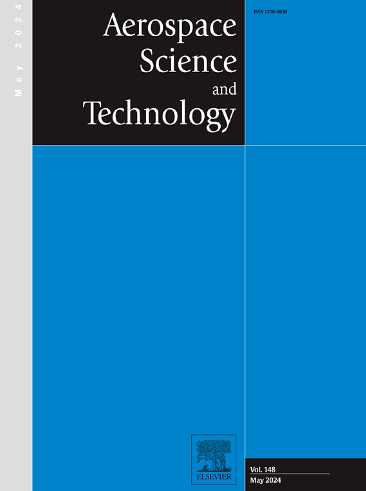Operation characteristics of miniature gas turbine with a pulse combustor
IF 5
1区 工程技术
Q1 ENGINEERING, AEROSPACE
引用次数: 0
Abstract
To clarify the operation characteristics of a gas turbine using pressure gain combustion, a miniature gas turbine with a pulse combustor was constructed, with an operation experiment conducted. The combustor has two combustion chambers, each operating in either a pulse or constant-pressure combustion state. In the normal combustion mode, wherein the two combustion chambers are in a constant-pressure combustion state, the gas turbine operates as a Brayton cycle. In addition, the gas turbine is operated in the pulse combustion mode, with one combustion chamber operated in the pulse combustion state and the other in the constant-pressure combustion state. In the pulse combustion state, the timing of hydrogen injection and ignition was actively controlled, with regular pulse combustion of 40 cycles per second achieved under gas-turbine operating conditions. The combustion chamber and turbine inlet pressures achieved peak pressures twice as high as the outlet pressure of the compressor. However, as the combustor was connected to the turbine and compressor without valves at the inlet and outlet, the flow pulsation generated by pulse combustion considerably fluctuated the turbine rotation and stagnated the air discharge from the compressor, making its operation unstable. The thermal efficiency of the pulse combustion mode did not show a clear advantage over that of the normal combustion mode, owing to the lower adiabatic efficiency of the turbine and compressor. However, owing to the large pressure fluctuations in the combustor, the hydrogen mass flow rates in both combustion modes were different, highlighting a future research direction to make the heat input the same for performance comparison.
求助全文
约1分钟内获得全文
求助全文
来源期刊

Aerospace Science and Technology
工程技术-工程:宇航
CiteScore
10.30
自引率
28.60%
发文量
654
审稿时长
54 days
期刊介绍:
Aerospace Science and Technology publishes articles of outstanding scientific quality. Each article is reviewed by two referees. The journal welcomes papers from a wide range of countries. This journal publishes original papers, review articles and short communications related to all fields of aerospace research, fundamental and applied, potential applications of which are clearly related to:
• The design and the manufacture of aircraft, helicopters, missiles, launchers and satellites
• The control of their environment
• The study of various systems they are involved in, as supports or as targets.
Authors are invited to submit papers on new advances in the following topics to aerospace applications:
• Fluid dynamics
• Energetics and propulsion
• Materials and structures
• Flight mechanics
• Navigation, guidance and control
• Acoustics
• Optics
• Electromagnetism and radar
• Signal and image processing
• Information processing
• Data fusion
• Decision aid
• Human behaviour
• Robotics and intelligent systems
• Complex system engineering.
Etc.
 求助内容:
求助内容: 应助结果提醒方式:
应助结果提醒方式:


